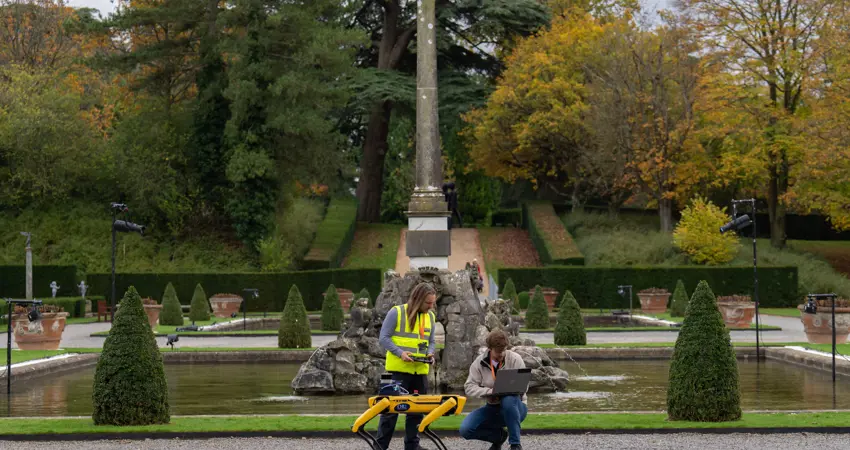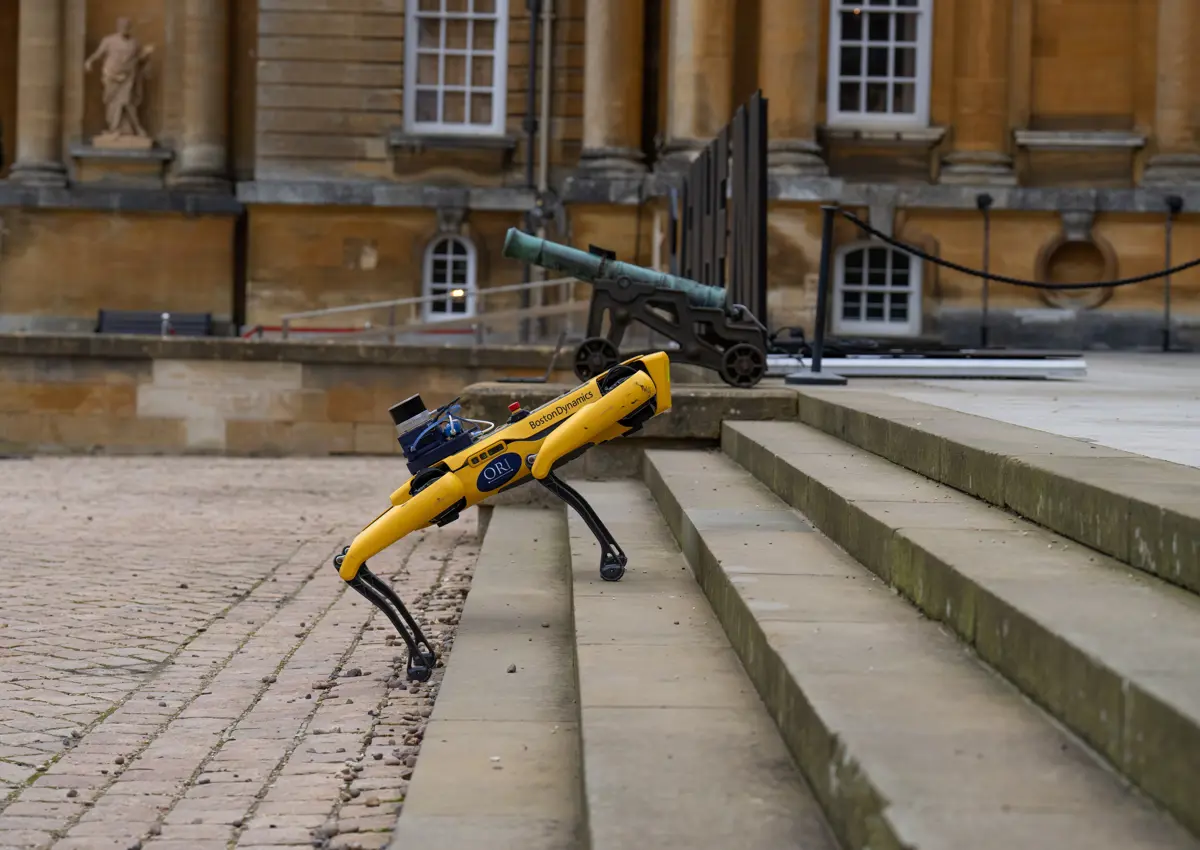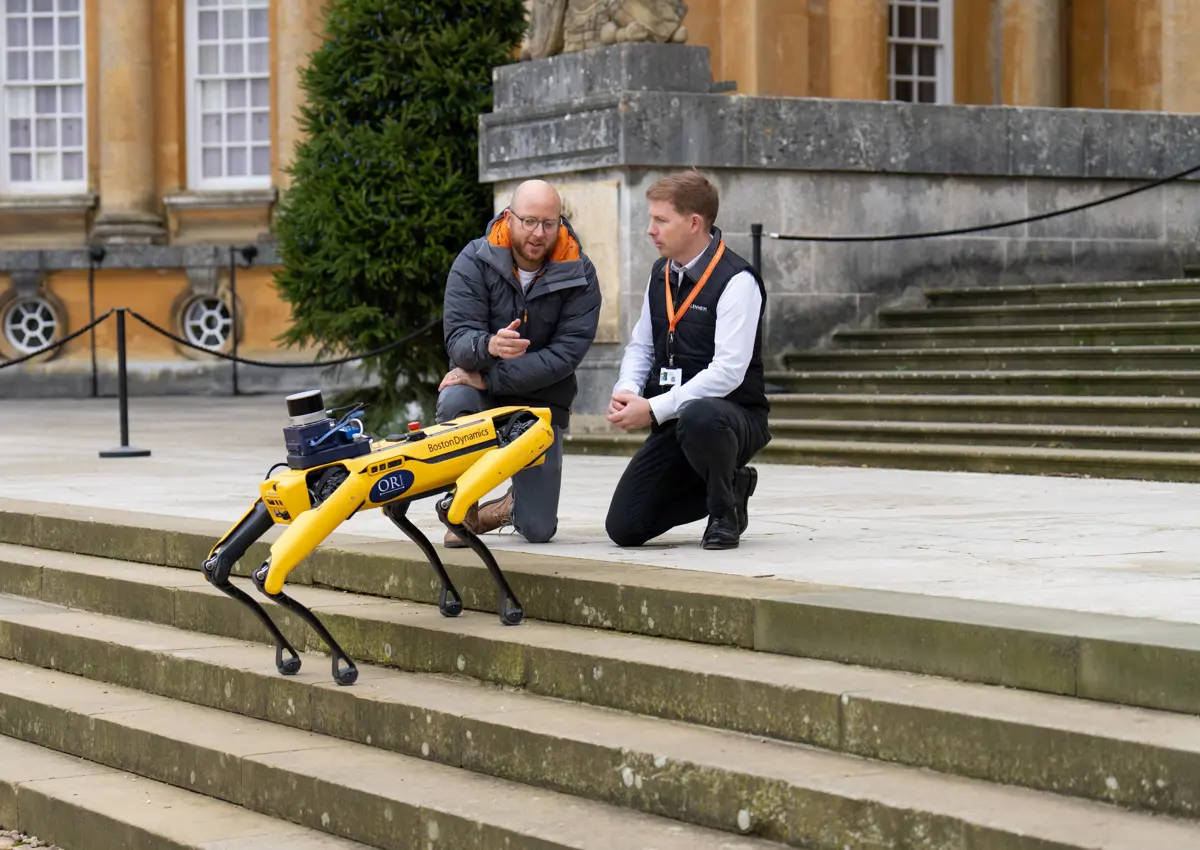07 Dec 2022
How Robo-dogs are helping gather species diversity data
A partnership between the Oxford Robotics Institute and the Department of Biology is using cutting edge robots to assess the state of species diversity and ecosystems in the UK

Image courtesy of Blenheim Palace
A wild robo-dog was recently seen exploring the grounds of Blenheim Palace. This is not AI going feral, but an exciting collaborative project between the Oxford Robotics Institute (ORI), led by Professor Nick Hawes, and Professor Rob Salguero-Gómez’s research team at the Department of Biology.
The team are developing cutting edge monitoring technologies, to help collect data in a fast, accurate, and financially-viable manner. One major application of this enhanced technological pipeline is in the collection of ecological data, to help monitor and predict how ecosystems and the species in them will respond to disturbances and climate change.
Both teams are working to develop autonomous monitoring capabilities, such as through the use of 'lawn-mowers' reconverted into autonomous robots, drones, and more recently the ‘robo-dog’. Robo-dog was recently deployed at Blenheim Palace, to test the system and its ability to gather data about species diversity.
The researchers are also working to create a 3D digital model of the palace linked to climatic, environmental, and building fabric monitoring devices to help predict the potential impacts of climate change.
Professor Nick Hawes, Director of the Oxford Robotics Institute, said: "Oxford Robotics Institute's mission is to develop the technology necessary to allow robots to be useful in challenging environments. A major part of our development process is testing our innovations in the real world, as part of field trials."
“Having the amazing Blenheim site just up the road allows us to quickly test new systems in environments from fields and forests, to cafes and courtyards, and this allows us to get further faster with our scientific aims."
Professor Rob Salguero-Gómez from the Department of Biology, said: “Traditionally biologists have spent hours, days, and years (sometimes decades) in the field doing manual sampling for data collection to assess an ecosystem. The more traditional methods are expensive (they require training of people, and their time in the field), error prone, and pose important health risks. Whilst there will always be a place for these methods, being able to automate and digitise this data collection will help to expedite the research process and provide us with the vital data needed to understand the impacts of climate change and habitat degradation”.
“Pilot projects like this are vital to assessing the viability of these technologies. In combination with cutting edge robots, we may be able to scale up to assess much larger areas of land and their ecological variables, using entirely automated methods. Our ultimate goal is to finetune these biodiversity monitoring pipelines with ORI’s technologies and our own fleet of hyperspectral drones in more proximate places (e.g., Wytham Woods, Blemheim Palace) to then deploy them in areas where climate change is hitting the hardest: the tundra, deserts, and tropical forests”.
Article adapted with thanks from the Department of Biology, University of Oxford
Images courtesy of Blenheim Palace







